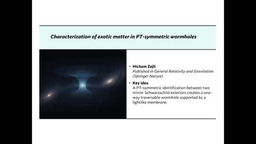Women in Quantum History
Published in Physics and Arts & Humanities

Almost everyone has heard of the film 'Hidden Figures.' The film tells the story of three African-American mathematicians. Katherine Goble Johnson (Taraji P. Henson), Dorothy Vaughan (Octavia Spencer), and Mary Jackson (Janelle Monáe) all worked at NASA during the space race. The film shows how important women were to the success of John Glenn's 'Friendship 7' mission. This was the first time Americans flew into space. It also addresses the racial and gender discrimination that existed at NASA at the time. Sharing such stories and highlighting female role models is very popular on social media, in journalism, and in science communication as a way of drawing attention to gender inequality. But doesn't focusing on a few women lead to new inequalities, injustices, and hierarchies?
While this is certainly true, it fails to recognize that gender equality is an ideal rather than a reality. Gendered misinformation is deeply embedded in the history of science and technology. This is particularly evident in the history of quantum physics. Highlighting the contributions of women to physics does not mean uncritically replacing male heroism with female heroism. Incorporating their work into the history of quantum physics provides a more accurate and well-founded representation of the subject. Our working group, 'Women in the History of Quantum Physics' (WiHQP), aims to address this issue by acknowledging the contributions of female physicists from diverse backgrounds who have advanced the field of quantum physics in various ways. By focusing on lesser-known figures and introducing a gender perspective to the historical study of physics, we intend to challenge the conventional, male-dominated narratives that perpetuate the masculine image of the field. My comment in Nature Reviews Physics, calling for the history of quantum physics to be reshaped to make women visible, is ultimately based on years of research conducted in collaboration with the WiHQP working group. Our book on this topic has recently been published by Cambridge University Press, and we plan to continue our work in the coming years.
[The poster shows Hertha Sponer working with equipment in a laboratory (© Emilio Segrè Visual Archives General Collection) in the background and Margriet van der Heijden with a newly unboxed copy of Women in the History of Quantum Physics (CUP), which she co-edited. © Photo by Iris Rijsman, courtesy of Margriet van der Heijden.]
Follow the Topic
-
Nature Reviews Gastroenterology & Hepatology

The basic, translational and clinical content in this journal is written by internationally renowned basic and clinical academics and researchers and targeted towards readers in the biological and medical sciences, from postgraduate level upwards.
Ask the Editor – Space Physics, Quantum Physics, Atomic, Molecular and Chemical Physics
Got a question for the editor about Space Physics, Quantum Physics, Atomic, Molecular and Chemical Physics? Ask it here!
Continue reading announcement





Please sign in or register for FREE
If you are a registered user on Research Communities by Springer Nature, please sign in